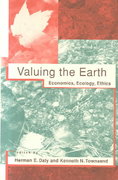Question
The main livelihood of many pastoral communities is raising dairy cattle. Suppose that the cost of a dairy cow is 5000 shillings. Cows produce milk,
The main livelihood of many pastoral communities is raising dairy cattle. Suppose that the cost of a dairy cow is 5000 shillings. Cows produce milk, which we will normalize in price to 1. Let us denote the number of herdsmen in a given area of savanna by N, and indicate the number of cattle that farmer i elects to field in the savanna by xi, letting
X = i xi
be the total number of cows. As more cattle graze on the savanna the total amount of available grass decreases, impacting milk production, such that over the course of a year each cow produces 50,000 - 200X units of milk.
- What is the production-maximizing number of cows per herdsman when there is only one herdsman?
- What is the production-maximizing number of cows per herdsman when there are N herdsmen and they cooperate fully? Assume herdsmen act identically.
- If each herdsman acts independently of his peers how many cows will he decide to field? Assume all herdsmen act identically.
- Express the difference between an individual herdsman's total profit in (b) and in (c). As the number of herdsmen grows large, what happens to this value?
- Consider a scenario where herdsmen in scenario (c) are considering two policies, one limiting the total number of cows that are allowed to graze on their patch of savanna and one limiting the total number of herdsmen. Which do you think would work better, and why?
Step by Step Solution
There are 3 Steps involved in it
Step: 1

Get Instant Access to Expert-Tailored Solutions
See step-by-step solutions with expert insights and AI powered tools for academic success
Step: 2

Step: 3

Ace Your Homework with AI
Get the answers you need in no time with our AI-driven, step-by-step assistance
Get Started


